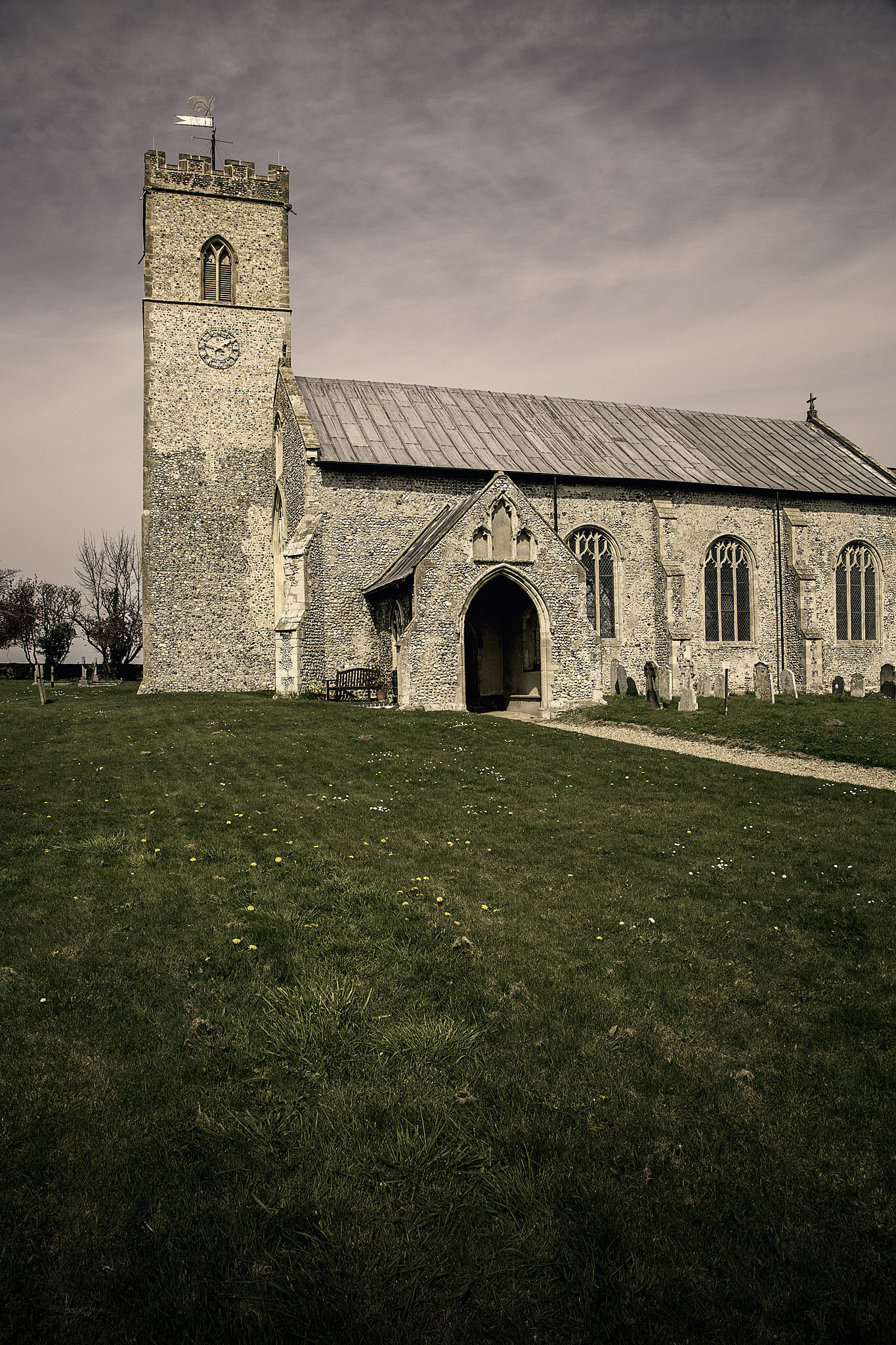Knapton Church of St. Peter & St. Paul, Eastern England
The parish church of St. Peter and St. Paul at Knapton dates from the 14th Century, however it can be said with certainty that this church replaced an earlier one. The font dates from the 13th Century, although the wooden cover dates from 1704. The Chancel also contains nine medieval coffin lids of an earlier date as well.
From the late 14th Century, through the mid-16th Century, it became fashionable to have open timber roofs in East Anglian parish churches. These were often embellished with carved angels, which were attached to beam ends or principal timbers. There is also a relationship in many churches between the Rood imagery and the angels above. However, there is little doubt that the fashion began with the King, when Westminster’s new hall was built at the end of the 14th Century with its hammerbeam angel roof.
The double hammerbeam roof is Knapton’s real treasure. It is a stunning example of late medieval craftsmanship, and one of the finest in England. The fact that it was installed in a small Norfolk village, may be the reason for a local legend, which says that the roof was not originally intended for Knapton at all, but that it was salvaged from the wreck of a transport ship at Mundesley, which is just two miles away. It was common, in the middle ages, for the church to be able to claim the right of wreckage, when a boat turned up near its shores. However, it could be equally possible that a wealthy patron, who wished to remain anonymous, funded its creation.
It has been thought that the double hammerbeam roof at Knapton can be dated exactly to the year 1503, and that the then Rector, John Smithe, was the patron. However, the assumption that John Smithe was the patron of the new roof at Knapton requires further scrutiny, as it would have been highly unusual, given that the responsibility of the Rector was for the Chancel rather than the Nave. This does not however detract from the roof itself in any way, but only adds to the mystery. The Nave roof at Knapton is one of the view surviving examples of a double hammer beam roof in Norfolk, and is in itself exceptional.
Knapton also suffered from the destruction caused by the Iconoclasm, and all the angels on the lower wall posts had their faces smashed, (they were replaced in the late 19th Century), but no-one bothered to climb any higher and almost all of the angels on the roof itself, are medieval. The roof supports 138 angels in three tiers, the lower ones found at the base of the wall posts, being from the late 19th Century restoration, as they are clearly different in style to the original angels above.
As much as I tried to find reference to the painting on the angels, this proved to be a futile endeavour, so all I can do is surmise a date from what is known, and from the large amount of medieval painting work I have seen. I do not think the painting is at all medieval. I firmly believe that it either dates from the late 19th Century restoration, or from the 1930’s work, with it being more likely to be the former. While the paint work certainly makes the angels stand out, originally much, if not all, of the ceiling would have also been painted. The paint on the angels, to my eye, certainly appears to be Victorian.








